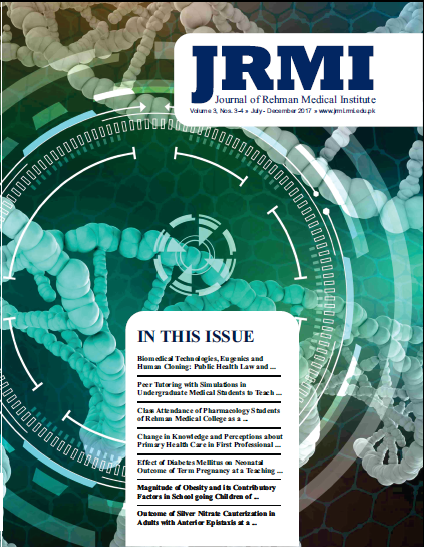Magnitude of Obesity and Its Contributory Factors in School Going Children of Affluent Families of Rawalpindi and Islamabad, Pakistan
Keywords:
Prevalence; Obesity; Adolescents; Socio-Economic Status; DietAbstract
Introduction: Childhood obesity is increasingly becoming a global nutritional issue, with prevalence more in children of affluent families. It is important to identify contributory factors early, so that lifelong prevention can decrease associated morbidity.
Objectives: To determine the magnitude of obesity and its contributory factors in students of affluent families from Rawalpindi and Islamabad, Pakistan.
Materials & Methods: A cross-sectional descriptive survey was performed from August to October 2013 on 1360 students from affluent families attending different schools of Rawalpindi and Islamabad. Data were collected after informed consent on a structured questionnaire. Other than demographic data, it contained variables of dietary habits and physical activity status of students. Data were analyzed by SPSS 19 for descriptive statistics.
Results: The sample included 48.3% male and 51.7% female students, 84.7% aged 10-15 years. Only 2.3% had a BMI over 25; 20.7% students had been overweight as children, while 54.6% had an obese family member. Majority (87.3%) of students watched Television (TV) daily, 24.5% for 3 hours or more. Laptops were used daily by 89.9% students, 21.7% for 3 or more hours. Only 41.2% played outdoor games daily, with 21.1% not playing outdoor games. Regarding sleep, 56.9% students were late night sleepers. Carbonated drinks were consumed by 84.2% students, and bakery items were preferred by 95% students. Late night snacks were taken by 35.4% students.
Conclusions: Obesity in the school children sampled was much lower than reported in western affluent societies; however, contributory factors were present in fairly high proportions.




